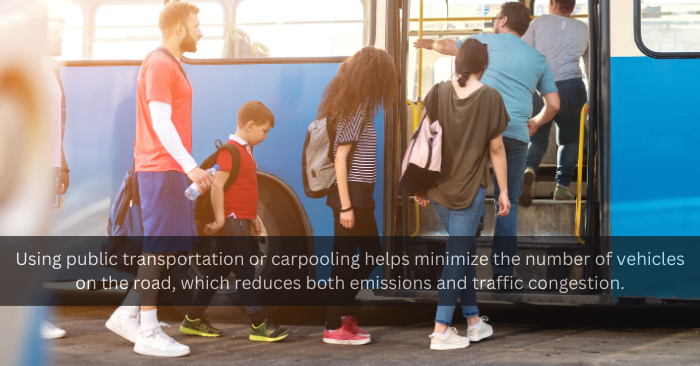The Importance of Sustainable Transportation: Reducing Our Carbon Footprint One Ride at a Time
Transportation is one of the largest contributors to carbon emissions worldwide, significantly impacting climate change. Adopting sustainable transportation methods is a crucial step toward reducing our environmental footprint and promoting eco-friendly living. Whether through public transit, walking, biking, or switching to electric and hybrid cars, we can all contribute to a cleaner, greener future.
1. Public Transit or Carpooling
One of the easiest and most effective ways to reduce your carbon footprint is by sharing rides. Using public transportation or carpooling helps minimize the number of vehicles on the road, which reduces both emissions and traffic congestion.
- Public transportation, like buses, trains, and subways, allows many people to travel together, consuming far less fuel per person compared to individual car rides.
- Carpooling with friends, neighbors, or coworkers for regular trips, like commuting to work, reduces fuel consumption, and wear and tear on vehicles. The fewer cars on the road, the better for air quality and the environment.
Impact:
A single bus can replace dozens of individual cars, reducing greenhouse gas emissions significantly. According to studies, taking public transit can reduce an individual’s carbon footprint by 30-70%.

2. Walking or Biking
For short trips, walking or biking are the most sustainable transportation options. Not only are they zero-emission methods of getting around, but they also offer multiple benefits for personal health and the environment:
- Walking and biking improve cardiovascular health, reduce stress, and promote a more active lifestyle.
- By choosing to walk or bike instead of driving, you help reduce the demand for fossil fuels and cut down on emissions from idling cars in congested areas.
Impact:
If more people chose to walk or bike for trips under a mile, it would not only reduce traffic but also cut down on 3-5% of emissions in urban areas, leading to cleaner air and healthier communities.

3. Electric and Hybrid Cars
For those who rely on personal vehicles, making the switch to an electric vehicle (EV) or a hybrid car can dramatically reduce emissions:
- Electric cars are powered by electricity, often from renewable sources, and produce zero tailpipe emissions.
- Hybrid cars combine gasoline engines with electric motors, significantly reducing fuel consumption and emissions. Hybrids are especially great for long trips and areas without easy access to charging stations.
Impact:
A typical gasoline-powered vehicle emits about 4.6 metric tons of carbon dioxide per year, while an EV emits none. Switching to an electric or hybrid vehicle can cut your carbon footprint from driving by up to 50-90%.

Why Sustainable Transportation Matters
Transportation choices make a significant difference in fighting climate change. By adopting sustainable transportation options like public transit, walking, biking, and switching to electric or hybrid cars, we can collectively reduce emissions, conserve energy, and improve public health. Every small change counts toward building a greener, more sustainable world.
What’s your favorite sustainable transportation method? Share your experience with us and let us know how you’re reducing your transportation impact!
Discover more from Bee Newz
Subscribe to get the latest posts sent to your email.
